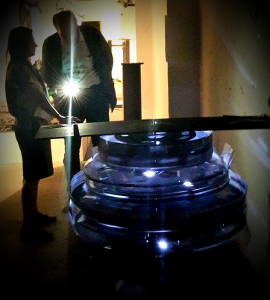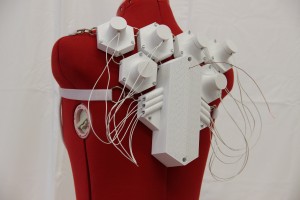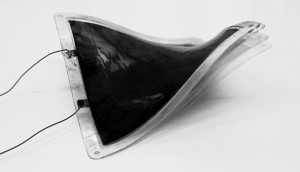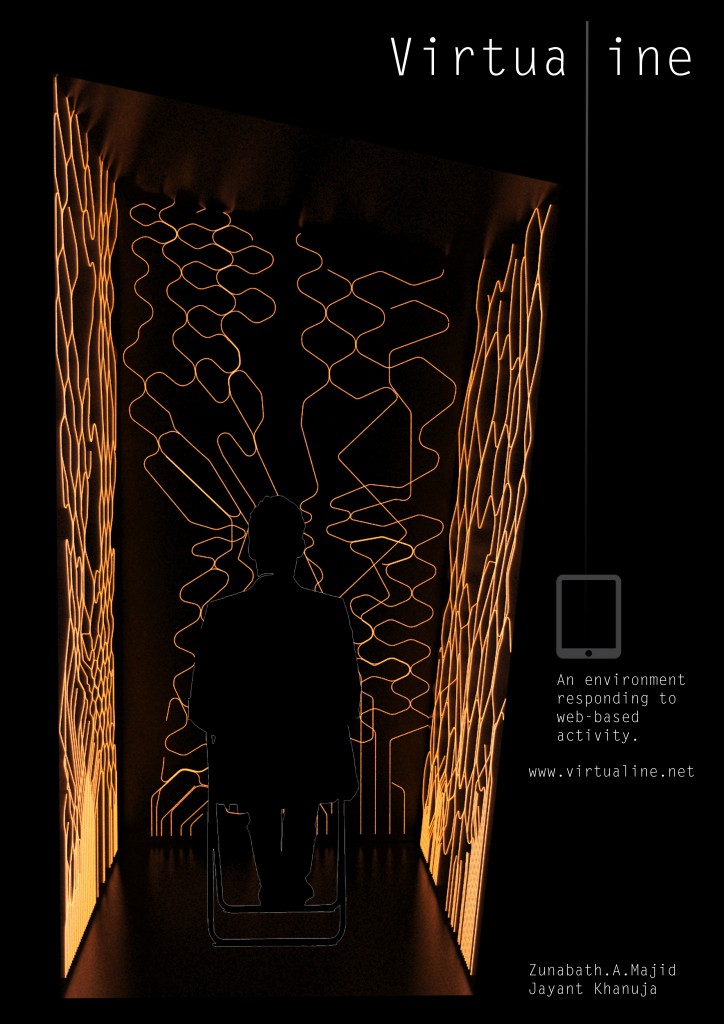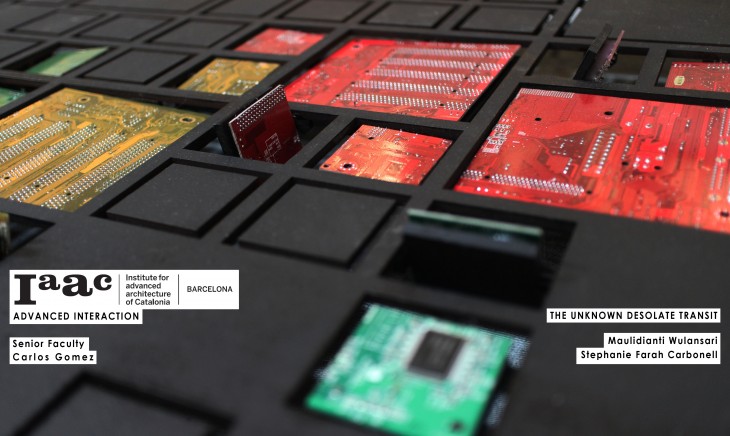Category Archives: Uncategorized
SPIN YOUR STORY
Touch Media
This research aims to create a new way of comunication using and increasing our sense of touch by creating a wearable tool, which has an open use, but in this research will focus to give a critical answer to our major visual based society and the concept that we never touched anything.
The main areas where this new form of comunication can be used are:
1. helping vision disabled people, which could then could have another option to comunicate other than the braille language, since it is a form of comunication that is not open for an instant answer.
2. Movement disabled people, or long distant relation users which want to experience another type of connection that the visual devices cannot create.
3. People who want to experience and receive other types of information that couldn‘t been send by visual comunication devices. Read More
Sound to Polymer 1.0
Smart materials are highly engineered materials that sense environmental events, process that sensory information, and act on the environment. These materials are able to “remember” configurations and can conform to them when given a specific stimuli (electric, stress, pH, etc).
Architects have conceptually been trying to fit smart materials into their normative practice alongside conventional building materials. Smart materials, however, represent a radical departure from the more normative building materials. Whereas standard building materials are static in that they are intended to withstand building forces, smart materials are dynamic in that they behave in response to energy fields. The advent of smart materials now enables the design of direct and discrete environments for the body.
The emergence of smart materials facilitates biomimicry, which is a field of study and imitation of nature’s methods and design processes. Mimicking nature’s mechanisms offers enormous potential for the improvement of our lives and the tools we use. Electroactive polymers (EAPs), and in particular, dielectric electroactive polymers, are one of the emerging technologies enabling biomimetics. Polymers that can be stimulated to change shape or size have been known for many years.
The activation mechanisms of such polymers include electrical, chemical, pneumatic, optical and magnetic. Electrical excitation is one of the most attractive stimulators able to produce elastic deformation in polymers.
A dielectric EAP actuator acts as a capacitor, where a thin elastomer film is sandwiched between two compliant electrodes. When a high DC voltage (kV) is applied to the electrodes, the arising electrostatic pressure squeezes the elastomer film in thickness and thus the film expands in planar directions. When the voltage is switched off, the elastic film returns to its original shape in an organic fashion. So far the composite has been used as electrostatic transducers, prosthetics, micro-air vehicles, braille displays, flat-panel loud-speakers.
Within a two months period, this project aimed to experiment with the material, and propose a suitable application for it through a top-down approach. Finally settling down to the idea of using it as a tool to adjust the acoustic performance of building interiors by using sound as an input to manipulate the space within, creating an enhanced indoor environmental quality.
Virtualine – Final Submission
A physical environment responding to a web based activity.
Our world is actually a World Wide Web. The world is connected by masses of internet cables, that keep the information or data flowing from one part of the world to the other. Fiber optic cables connect people all over the world. These optics not only connects the world but also creates such a complexity that the basic meaning of interaction throughout the world can be modified and controlled instantly. We all leave so much data but we are always unaware of where these data adds up or what traces of data we leave behind with our everyday activities.
The amount of data created daily is unimaginable. All this data lasts forever and leaves a data trace. The Big Data is the concept of such behaviour. Thus, we need to be aware of these data traces we leave behind. Creating data is not wrong. But we have to be aware of where and what data we leave behind. The idea is to make a statement suggesting that whatever activity one leaves on Internet has an effect on someone else‘s environment.
The online world that we all live in now is actually underwater and somewhat invisible. The idea of the physical installation is to create a space out of fiber optics and also to bring in the sense of this unseen world.
The Unknown Desolate Transit
Electrical and electronic waste (e-waste) is currently the largest growing waste stream in the world. It is hazardous, complex, dangerous and expensive to treat in an environmental manner; there is a general lack of legislation and enforcement surrounding its handling, disposal, and recyclability. The Unknown Desolate Transit is a project to create and awareness about e-waste: an interactive installation providing physical and digital interfaces for people to get more information about the topic by using their own phones (their personal future electronic waste) to make a physical alteration on the installation.
Information about the legal and illegal, otherwise known as, black market exporting and importing e-waste that is currently happening is mainly portrayed by the physical composition. The digital interface educates the user by providing more details about the e-waste and most importantly empowers them with information on how to be agents of change for this global problem.
Human driven technology is the tool to alter the installation. the user is enlightened by the problems and waste that their personal technology creates. Communication between the user, the interface, and the installation creates a platform to heighten awareness while searching for a solution.
Developed in the Advanced Interaction Research Line, this project has evolved with its own approach, attempting to consistently reveal urban and environmental issues. With architecture understanding, the team merges the human experiences + interaction and fabrication method in their work. Progressive design thinking at in mind, the process, interface, and the installation itself have more purposes than a state of art, the composition and functionality seemlessly complement the other.

